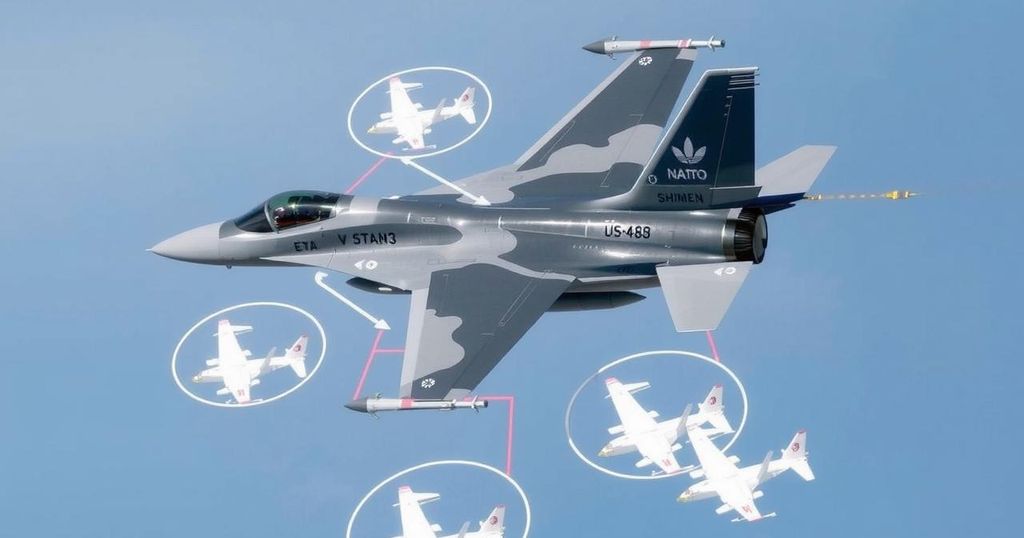Tensions between the U.S. and Turkey in Syria are rising, exemplified by the SDF’s recent success in downing a Turkish Bayraktar TB2 drone. This incident, along with previous confrontations, raises concerns about a potential NATO vs. NATO conflict as both nations grapple with their military objectives and alliances in the region. The situation is compounded by accusations of ceasefire violations and an increased U.S. military presence aimed at stabilizing the area.
Recent developments in Syria have prompted concerns that a potential NATO vs. NATO conflict may be unfolding, primarily caused by heightened tensions between the United States and Turkey regarding territorial control in the region. A significant incident occurred on January 1, 2025, when Syrian Democratic Forces (SDF), which are supported by the United States, successfully downed a Turkish Bayraktar TB2 drone near the Karakozak Bridge in northern Raqqa. This event, coupled with a history of escalating confrontations, suggests that the rivalry between the two NATO members could lead to further military engagements.
The SDF Media Center confirmed the downing of the drone, stating, “At exactly 1:00 PM this afternoon, our fighters successfully downed a Turkish Bayraktar TB2 drone in the Karakozak Bridge area.” The incident is indicative of the SDF’s growing capabilities, as they had previously intercepted attacks from Turkish drones, including another successful takedown of a TB2 drone in mid-December. These developments reflect an ongoing struggle for influence in Syria amidst broader geopolitical tensions.
The recent shootdown is part of a series of confrontational actions, with the SDF having downed three Turkish drones within a month. Previous incidents include an event in October 2023, where a U.S. Air Force F-16 shot down a Turkish drone reportedly targeting Kurdish fighters near American positions. Such forceful actions between NATO allies indicate an alarming trend of military miscalculations and misunderstandings, with U.S. officials later claiming attempts were made to alert Turkey before engaging the drone.
The SDF continues to accuse Turkey and its allied groups of undermining peace efforts in the region, asserting that such hostilities defy the U.S.-brokered ceasefire agreement. Despite the Pentagon’s ongoing assurances concerning the ceasefire, tensions have not dissipated. Instead, the situation reflects a deepening crisis, particularly in territories near Kobani, which has witnessed significant confrontations.
Reports indicate that the United States is reinforcing its military presence in northern Syria, with logistics and equipment seemingly being redirected towards strategic areas like Kobani. Approximately 2,000 U.S. troops currently operate in Syria, focused primarily on countering the Islamic State. The increased military activity, however, highlights a potential shift toward a broader engagement strategy, possibly aimed at establishing a new coalition base in conflict-affected areas.
The geopolitical landscape in Syria presents a complex interplay of international relations, particularly involving NATO members such as the United States and Turkey. The Syrian conflict has cultivated an environment of competing interests, especially concerning Kurdish forces allied with the U.S. and Turkey’s military objectives in the region. The use of advanced military technology, like the Bayraktar TB2 drone, reflects evolving warfare strategies amid allegations of ceasefire violations and escalated attacks, creating a precarious balance of power as both nations navigate their military operations against regional adversaries.
The ongoing confrontations between the U.S.-backed Syrian Democratic Forces and Turkish military assets signify an urgent need for diplomatic resolution amidst rising tensions. The incidents of drone shootdowns and increased military presence underscore the fragility of existing agreements and the complex dynamics of international alliances. As both the U.S. and Turkey recalibrate their strategies in Syria, the potential for conflict between NATO allies looms large, necessitating careful navigation to avert escalation into a broader confrontation.
Original Source: www.india.com






